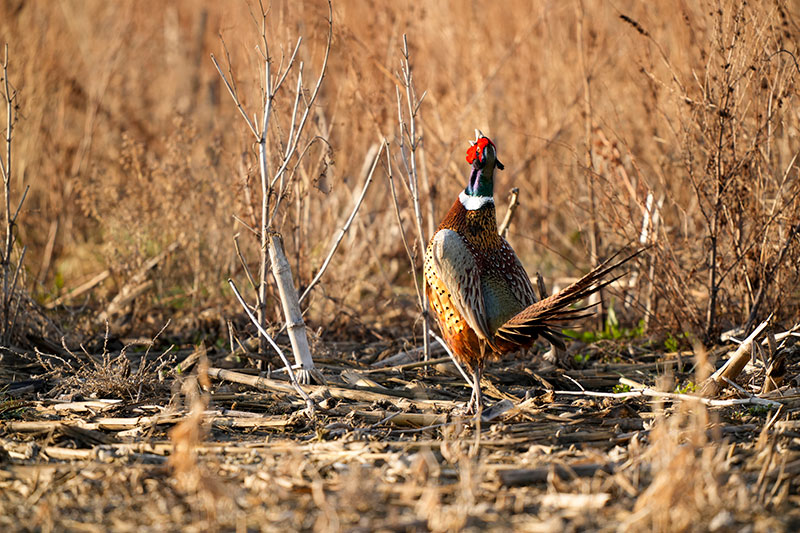It’s one of those spring mornings on the Northern Plains you don’t mind rolling out of bed long before sunrise to stand on the side of a dirt road with your hands in your pockets.
Birds of all shapes and sizes, the majority of which I can’t name besides the obvious ones, are greeting the day in a chorus of calls that are lost on me and not intended for me.
Some wade in the shallow, temporary wetlands that are the product of consecutive days of May rains. Some fly overhead, share the shoulder of the dirt road with us at a safe distance, while others perch in the cattails and atop barbed wire.
We’re in good company this morning.
Amidst the confusion of calls, we stand here with a purpose, to tally the number of ring-necked roosters heard in the distance as part of the agency’s long-running spring pheasant crowing count.
Under the guidance of RJ Gross, Game and Fish Department upland game management biologist, we’re driving a 20-mile route, stopping 10 times and listening for 2 minutes at each stop.
Easy enough.
Agency biologists have been running crowing count routes for years from May 1 to June 10 to get a sampled look at the number of roosters in the breeding population. The number of crows heard are just one of the ingredients biologists include in the mix when trying to determine what pheasant hunters can expect come fall. They’re not a tell-all, but a first good indicator.
Without even looking at the app on RJ’s phone providing wind speeds and whatever other weather conditions he needs to document, it seems like the perfect morning to be listening for the rusty-hinge-like call of North Dakota’s most popular upland game bird. While I can imagine a gaudy rooster, with its head tipped back and beak spread, delivering its unmistakable message to notify hens and warn other roosters of its territory, we learn quickly my imagination is better than my hearing.
It’s the end of the 2 minutes on our second stop and RJ looks at his clicker and tells me his tally. I don’t doubt his announcement but cuss old age and years of not wearing hearing protection and reveal that he heard 47 more crows than I did.
And on it goes.
The only consolation as we roll from stop to stop is that I’m seeing what everyone else is seeing from the moving vehicle — deer in the distance, a pair of sharp-tailed grouse on the wing, ubiquitous Canada geese seemingly occupying every wetland and pheasants graveling along the roadside and in fields still showing last year’s stubble.
While these are things I can confirm because I can see them, RJ jokes that my days as a crowing count counter are numbered, if not already over.

